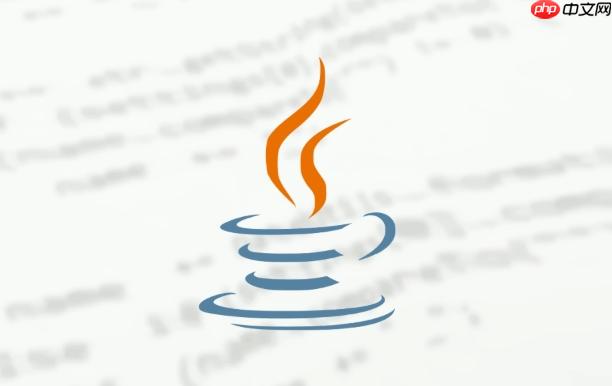使用synchronized和wait/notify实现生产者消费者模式,通过共享缓冲区协调线程:当缓冲区满时生产者等待,空时消费者等待,调用notifyAll唤醒对应线程。

在Java中实现多线程生产者消费者模式,核心是让生产者线程向共享缓冲区添加数据,消费者线程从缓冲区取出数据,同时保证线程安全和避免资源浪费。可以通过wait()、notify()或使用BlockingQueue来高效实现。
这是基础实现方式,通过同步方法控制对共享资源的访问。
关键点:当缓冲区满时,生产者等待;当缓冲区空时,消费者等待。
示例代码:定义一个共享缓冲区:
class SharedBuffer {
private final int[] buffer;
private int index = 0;
public SharedBuffer(int size) {
this.buffer = new int[size];
}
public synchronized void produce(int value) throws InterruptedException {
while (index == buffer.length) {
wait(); // 缓冲区满,生产者等待
}
buffer[index++] = value;
System.out.println("生产: " + value);
notifyAll(); // 唤醒所有等待线程(包括消费者)
}
public synchronized int consume() throws InterruptedException {
while (index == 0) {
wait(); // 缓冲区空,消费者等待
}
int value = buffer[--index];
System.out.println("消费: " + value);
notifyAll(); // 唤醒生产者
return value;
}
}生产者线程:
立即学习“Java免费学习笔记(深入)”;
class Producer implements Runnable {
private final SharedBuffer buffer;
public Producer(SharedBuffer buffer) {
this.buffer = buffer;
}
@Override
public void run() {
for (int i = 1; i <= 5; i++) {
try {
buffer.produce(i);
Thread.sleep(500); // 模拟生产耗时
} catch (InterruptedException e) {
Thread.currentThread().interrupt();
}
}
}
}消费者线程:
class Consumer implements Runnable {
private final SharedBuffer buffer;
public Consumer(SharedBuffer buffer) {
this.buffer = buffer;
}
@Override
public void run() {
for (int i = 0; i < 5; i++) {
try {
buffer.consume();
Thread.sleep(800); // 消费较慢
} catch (InterruptedException e) {
Thread.currentThread().interrupt();
}
}
}
}测试运行:
public class ProducerConsumerDemo {
public static void main(String[] args) {
SharedBuffer buffer = new SharedBuffer(3);
Thread p = new Thread(new Producer(buffer));
Thread c = new Thread(new Consumer(buffer));
p.start();
c.start();
}
}更推荐的方式是使用java.util.concurrent.BlockingQueue,它内部已处理了线程等待与唤醒逻辑。
优势:无需手动管理wait/notify,代码简洁且不易出错。
import java.util.concurrent.ArrayBlockingQueue;
import java.util.concurrent.BlockingQueue;
class PCUsingQueue {
private final BlockingQueue<Integer> queue = new ArrayBlockingQueue<>(3);
class Producer implements Runnable {
@Override
public void run() {
for (int i = 1; i <= 5; i++) {
try {
queue.put(i); // 自动阻塞如果队列满
System.out.println("生产: " + i);
Thread.sleep(500);
} catch (InterruptedException e) {
Thread.currentThread().interrupt();
}
}
}
}
class Consumer implements Runnable {
@Override
public void run() {
for (int i = 0; i < 5; i++) {
try {
Integer value = queue.take(); // 自动阻塞如果队列空
System.out.println("消费: " + value);
Thread.sleep(800);
} catch (InterruptedException e) {
Thread.currentThread().interrupt();
}
}
}
}
public static void main(String[] args) {
PCUsingQueue pc = new PCUsingQueue();
new Thread(pc.new Producer()).start();
new Thread(pc.new Consumer()).start();
}
}使用wait()时必须配合synchronized,否则会抛出异常。
循环判断条件应使用while而不是if,防止虚假唤醒导致问题。
notifyAll()比notify()更安全,能唤醒所有等待线程,避免死锁。
实际开发中优先选择BlockingQueue实现,如ArrayBlockingQueue、LinkedBlockingQueue等,它们是线程安全的,性能更好。
以上就是如何在Java中实现多线程生产者消费者模式的详细内容,更多请关注php中文网其它相关文章!

每个人都需要一台速度更快、更稳定的 PC。随着时间的推移,垃圾文件、旧注册表数据和不必要的后台进程会占用资源并降低性能。幸运的是,许多工具可以让 Windows 保持平稳运行。

Copyright 2014-2025 https://www.php.cn/ All Rights Reserved | php.cn | 湘ICP备2023035733号